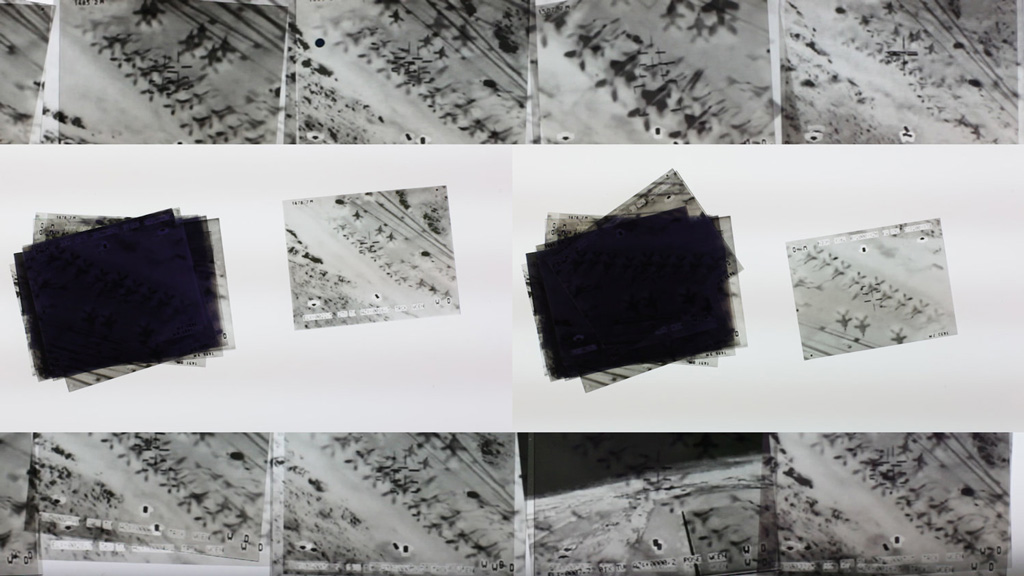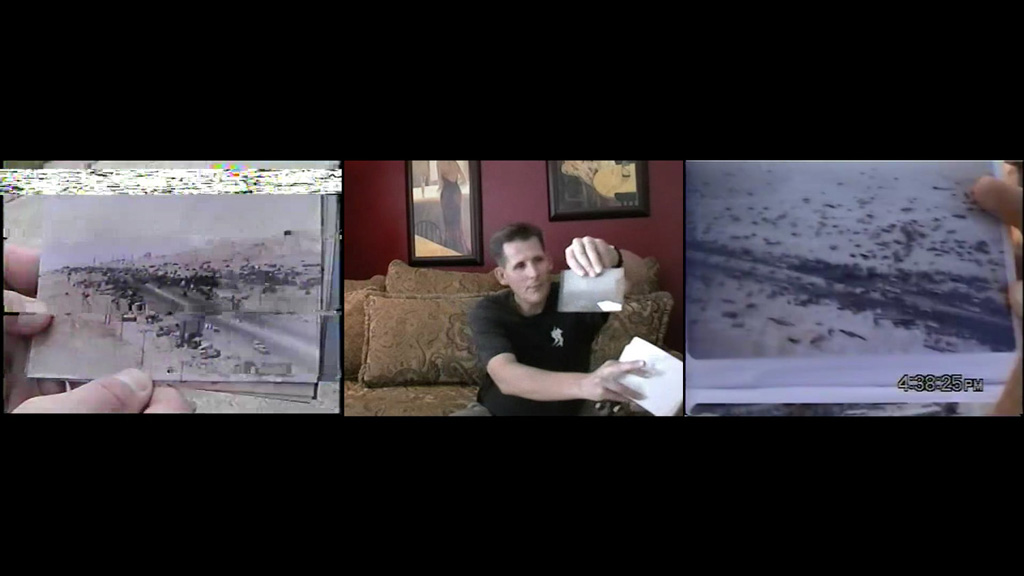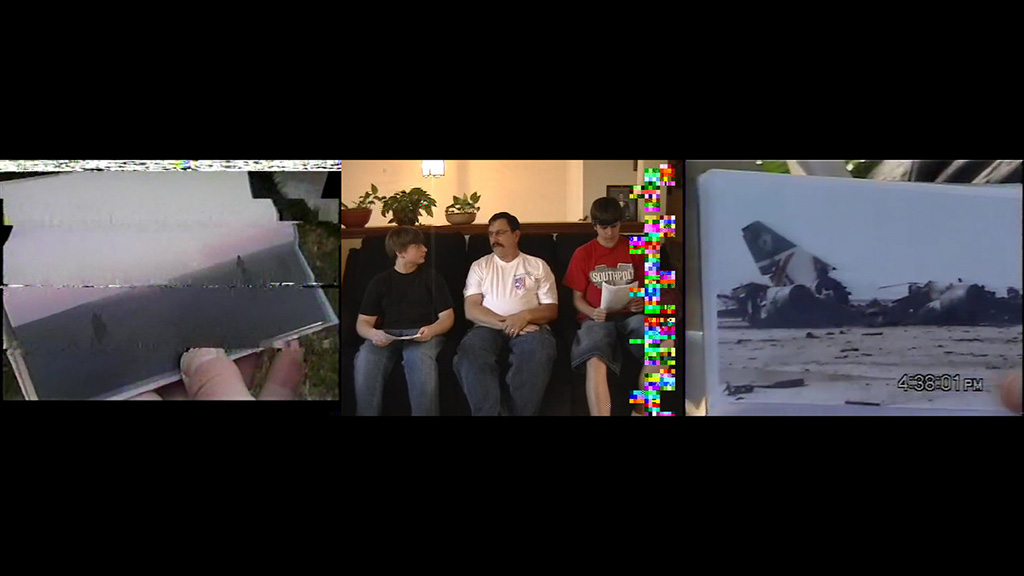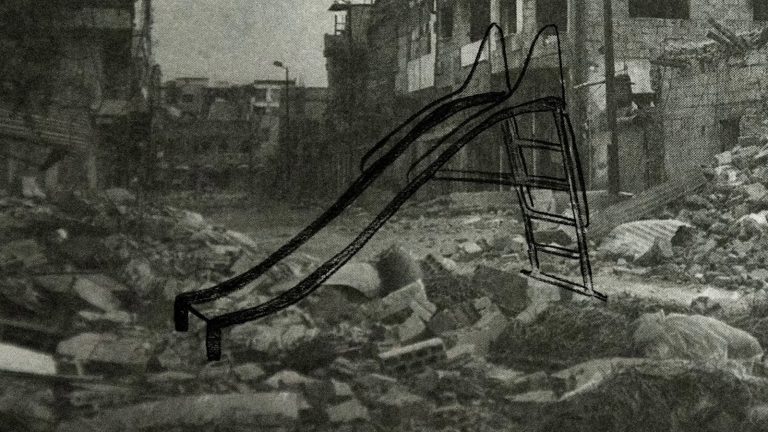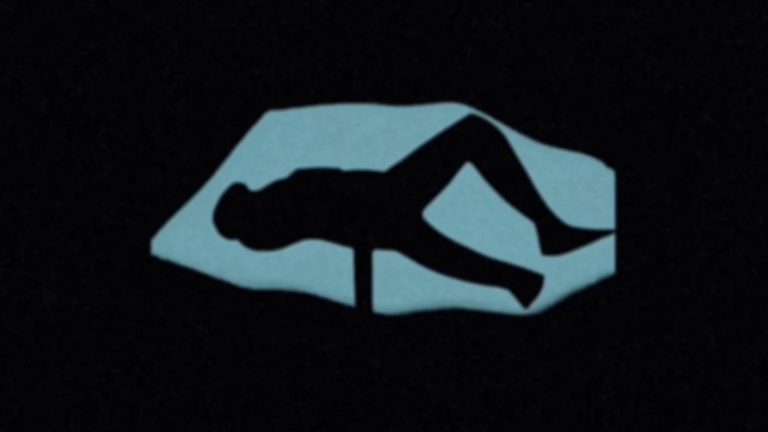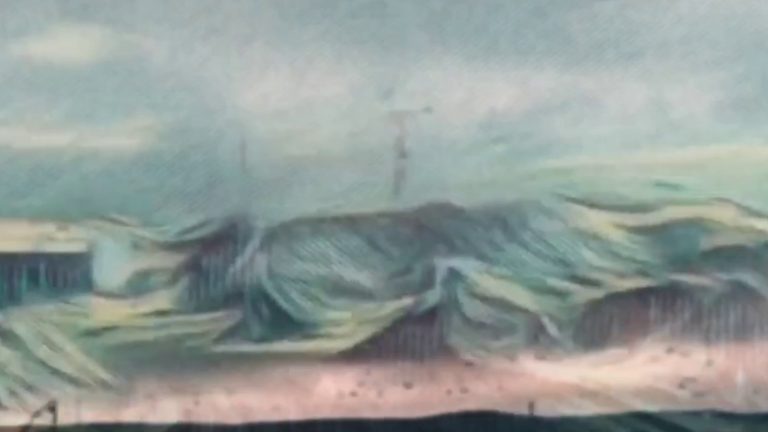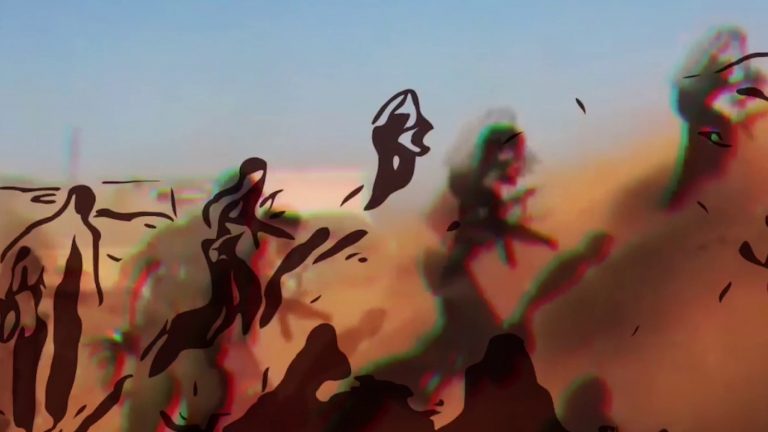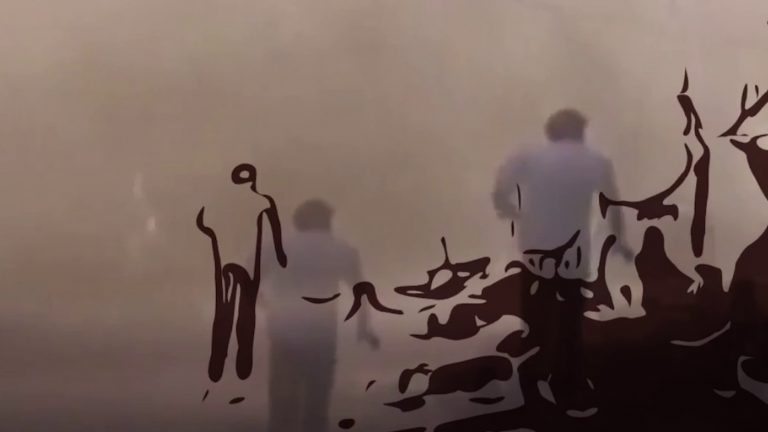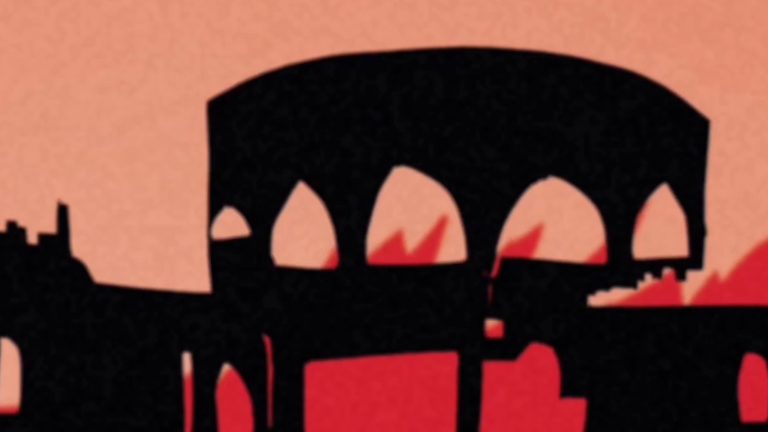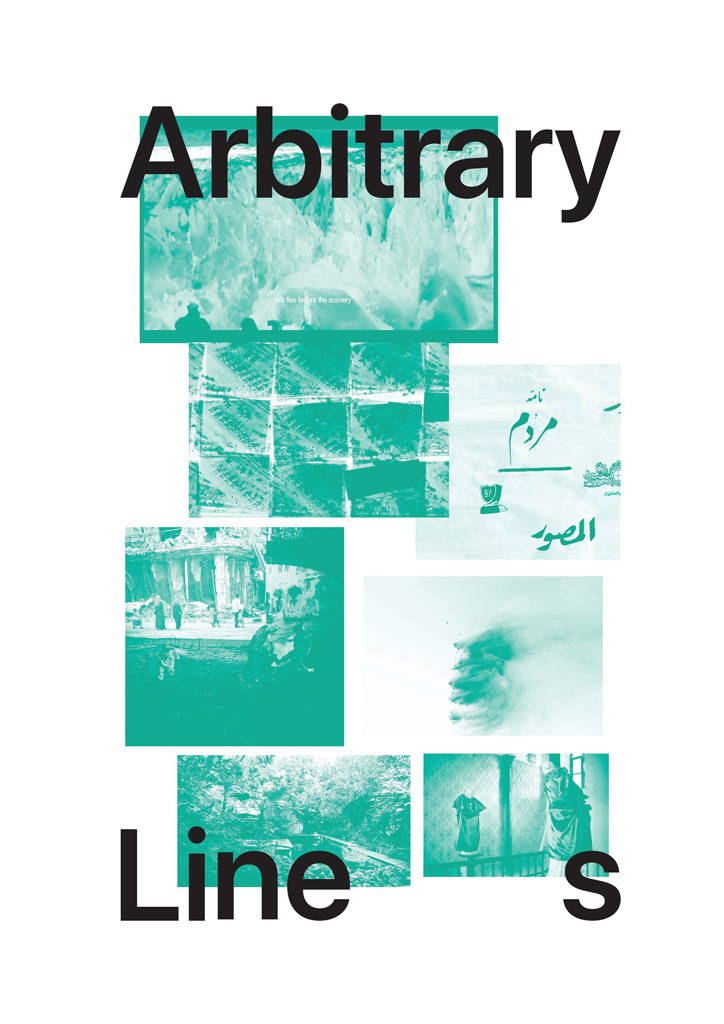
Project by Parking Video Library & New Media Society
In collaboration with Aaran Projects – Tehran
Opening on July 23rd, 2021
On view until August 2nd, 2021
Artists:
Sara Abbasnejad | Anahita Hekmat | Nebras Hoveizavi | Jaleh Nesari | Sona Safaei Sooreh | Sanaz Sohrabi | Negar Yaghmaeian
Curated by Amirali Ghasemi
Translated by Bahar Ahmadifard
Special thanks to
Nazila Noebashari, Shirin Mellatgohar & Aaran Projects team, Bahar Ahmadifard, New Media Projects, Hinterland Gallerie, Gudrun Wallenböck, Hasty Aria, Mazdak Ayyari, Nastaran Safaei, Samira Alikhanzadeh & Mr. Kamali
Curator's Note
“Arbitrary Lines” is a project by the New Media Society and Parking Video Library, which gathers seven lens-based artists who live around the globe.
Their unique and research-based approaches question mass media coverage, representations of the other, and the silent process of marginalization via micro/macro narratives. In these works, the boundaries of intimate stories and personal spaces blur with the manifestation of sociopolitical concerns.
Using various resources from print media, found-footages, and testimonies in public archives to collage and 3D models inspired by advertisements, their multifaceted perspectives reflect fragmented realities and fables, simultaneously. Most importantly, their cameras dare to capture the obscure and elusive lines of segregation and normalization. Hence, the ambiguity within the imaginary allows them to bypass loops of Nostalgia and reveal the vulnerability of the system at the same time.
The visual poetry and peculiar observations of the artists exhibit a wide spectrum of concerns.
“Script for Groundless Images” by Sanaz Sohrabi decodes the affective registers upon which military and media complexes rely for propelling and sustaining a homogeneous narrative of trauma and war. The inclusion of the interviews gathered from the American veterans of the Persian Gulf War and insertion of a fictive character tend to reveal the uncertainty and performativity of the interview as a tool for rethinking and recollection.
Sona Safaei Sooreh’s work titled “Revolving” revisits the semi-colonial history of the Iranian Oil Industry via comics, animations, and magazine ads. It seems that new propaganda messages have emerged from the initial British petroleum ads of the 1950s, tinted with a middle-eastern twist and contemporary fictional figures.
The fragments of the essay film titled “How to Leave the History Behind and Refuse to Relive it Every Day?” by Nebras Hoveizavi, next to her earlier body of collage work “Trying to Read Western Press” create familiar yet unexplored scenery inspired by poetry and alternative history.
Daily life and the delicate line between childhood and teenage years are presented through a gender-aware lens of Sara Abbasnejad.
In Anahita Hekmat’s video, the intimate/mind space appears in the distance between home and its greenhouse. We witness that the past of the present and the imagined future of the past merge.
In Negar Yaghameian’s project, the geographical boundaries that once were crucial for human growth are now changing at an unbelievable pace. Independent local shipping and trade, which was always part of life in these regions, involved human mobility and survival from one generation to another. New ways of international trade and shipping are now threatened. Large ocean-going vessels replace the movement of people and trade with small-sized Dhows. The Smell of Earth and Tree gathers photographs, maps, and other treasured possessions to reimagine these stories, many of which remain untold.
Rendered via found footage under the #earthsound hashtag, Jaleh Nesari’s piece on the future of the blue planet appears more and more frightening as its residents are becoming aware of their imposed irreversible manipulations, but their so-called environmental activism often contradicts their lifestyle and the way their artistic interpretations portray/address the crisis.
The “Arbitrary Lines” reflect on the existing lines. Whether they are growing or fading, coming close or moving away, these seven artists have shaped them all into personal, organic, entertaining, and frightening imagery. They are ephemeral and delicate tracks having captured in frames.
Script for Groundless Images | Sanaz Sohrabi | Video | 13: 25 | 2018
“Script for Groundless Images” unpacks the affective registers upon which military and media complexes rely to propel and sustain a homogeneous narrative of trauma and war. Written and edited, mostly, with archival material from the Library of Congress Veterans Video History Project, “Script for Groundless Images” primarily focuses on the interviews gathered from the American veterans of the Persian Gulf War. The Veterans Video History Project of the United States’ Congress comprises an ongoing collection of video interviews contributed mostly either by veterans’ family members or various educational institutions. This work looks at interviews as a signature of media representation of war which utilizes images and personal archives as ‘memorabilia’ to facilitate the dominant narrative. These video interviews are themselves archival residues while containing other forms of archival fragments such as photographs and various artifacts that interviewed veterans have collected during their involvement in the war. For this project, I worked with an actor and improviser to create an auxiliary interview that takes these video archives both as its method and content to fabricate a parallel story and embed it back within the larger body of these video archives. “Script for Groundless Images” diverts from a cohesive storyline, which is one of the objectives of the Library of Congress history project; it reveals the uncertainty and performativity of the interview as a tool for rethinking and recollection.
Revolving | Sona Safaei Sooreh | Installation: Sculpture, Video, and Newspaper | 2020
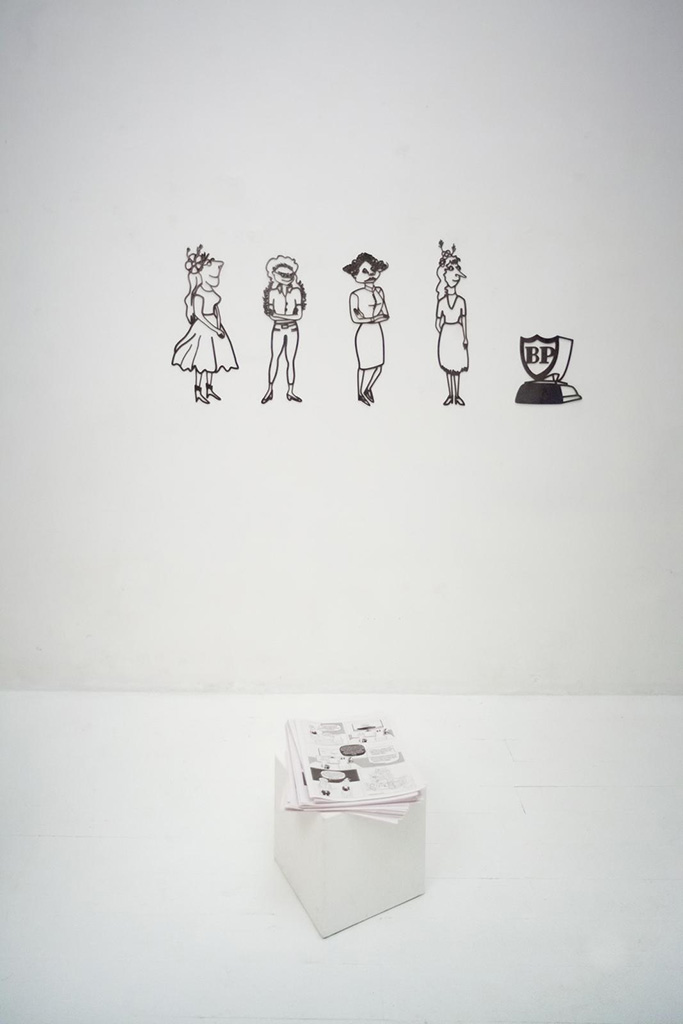
Revolving is a multi-media art project which revisits the semi-colonial history of the Iranian Oil Industry. In part, it takes the form of a comic script, printed in traditional tabloid-size newspapers, attempting to compare the story of the nationalization of the Iranian Oil Industry with present-day political affairs.
The comic characters are inspired by cartoon drawing advertisements made by Ronald Searle for the British Petroleum company back in the 1950s. Safaei imagined a fictional life for Searle’s characters and illustrated the life of their grandchildren who live in our current era. The new propaganda messages were born from the initial British petroleum ads with a middle-eastern twist. To further this concept, Safaei puts together video footage from an interview with BP staff when they were expelled from Iran in the 1950s and a scene from the Walt Disney movie “Cinderella” to portray the imperial attitudes of the British subjects towards Iran.
“Revolving” was possible with the generous support of the Ontario Arts Council and Toronto Arts Council.
How to Leave the History Behind and Refuse to Relive it Every Day? | (Fragments of an Ongoing Film-essay) | Nebras Hoveizavi | 2020
From 2010 to 2015, I began studying the New York Times’ views on the Middle East conflict. I collected pages related to news, art, and the Middle East. The Arab Spring had just begun. I was an art student at the California Institute of the Arts (CalArts). I had taken a political science course as part of my fall semester program to fill up my units. We had to read the New York Times, understand the role of politics, and compare it to history. The matter that arose during this period was how to collate the Arab Spring with the 1979 revolution. I understand the revolution from books or the mass media. But how do you comprehend the history in which you did not live? I started forgetting history and instead chose 2010 as the origin of history. I did not know when I would stop collecting ‘history’; I just knew that one day it would come to fruition. Finally, 2015 marked a turning point in which history and time had to stop so that I could make up history. After five years in 2020, I started working on this project again. It was while many things had changed, and some had remained the same. I needed time to understand the Times images. That’s why I changed my living and studio environment to the Middle East and worked with artists and people. I asked them to read aloud the different narratives I wrote/produced in this project. Using still and moving images, I created a visual article.
This film essay started from getting inspired by poetry and history. This project consists of twelve poetic texts that have been read and recorded by different people. Each poem is for one photo/image, and these images are from various times and places in the Middle East.
I composed the English / Persian poems using collages of New York Times news articles. The New York Times collecting-based project during my student days in the United States was an attempt to inhabit and breathe the “Middle East climate.” Looking at my hometown from a distance, I wanted to remember where I came from.
In the end, I got to the point where I knew I had “lived” long enough to leave my version of fictitious news as a kind of alternative history for the future.
For me, the New York Times was illustrating and establishing the history that we all lived through. And now, to reinforce the memory, it revisits what happened. This time the narrator has changed, the current one, often asks questions about her disappeared images and wonders how she has once lived through the war.
Trying to Read Western Press | Nebras Hoveizavi | Photo Collage / Installation | 2014
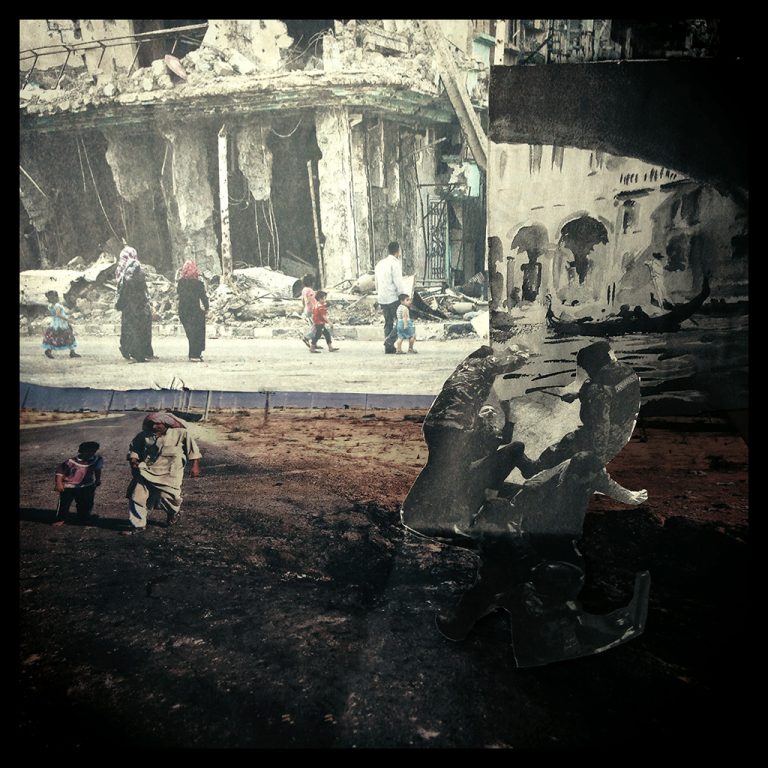
The project is based on a collection of images and articles from The New York Times over four years. During this process, I realized that the image has dominated the text due to the special type of selection of “images” in the representation of Middle Eastern news. I tried to create unfamiliar characters based on a selection of articles to express narratives that had not been created before, a kind of retelling away from fixed boundaries, common terms, and common editorial rules. It is a kind of redefining of a hypothetical history, a “history” that is not “past” but is happening right now. In other words, it’s a hypothetical history that, although some time has passed since its “occurrence”, is looking for an opportunity to be re-examined.
Green Home | Anahita Hekmat | Video| 08:00 | 2019
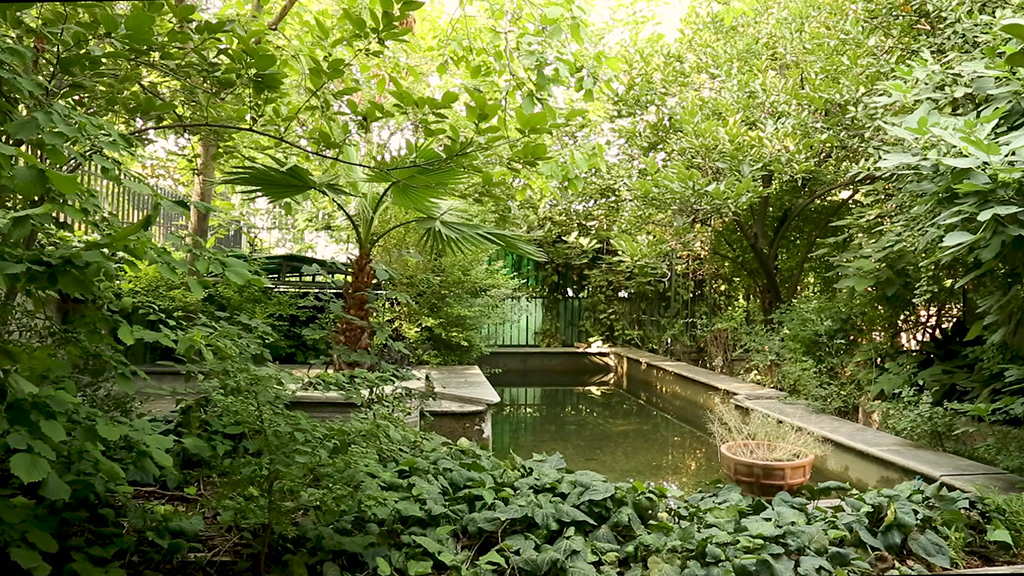
Green Home was filmed in Hekmat’s childhood house in Tehran, where a greenhouse has been positioned as the architectural and organic nucleus of the home. The plants are seen and treated as guardians to the life unfolding there. The narration in the video is constructed as an origin myth — one that positions the perennial plants in the home as containing memories of the place and possessing the ability to transmit these memories and stories to different generations over time.
#Earthsound | Jaleh Nesari | Video | 10:36 | 2019
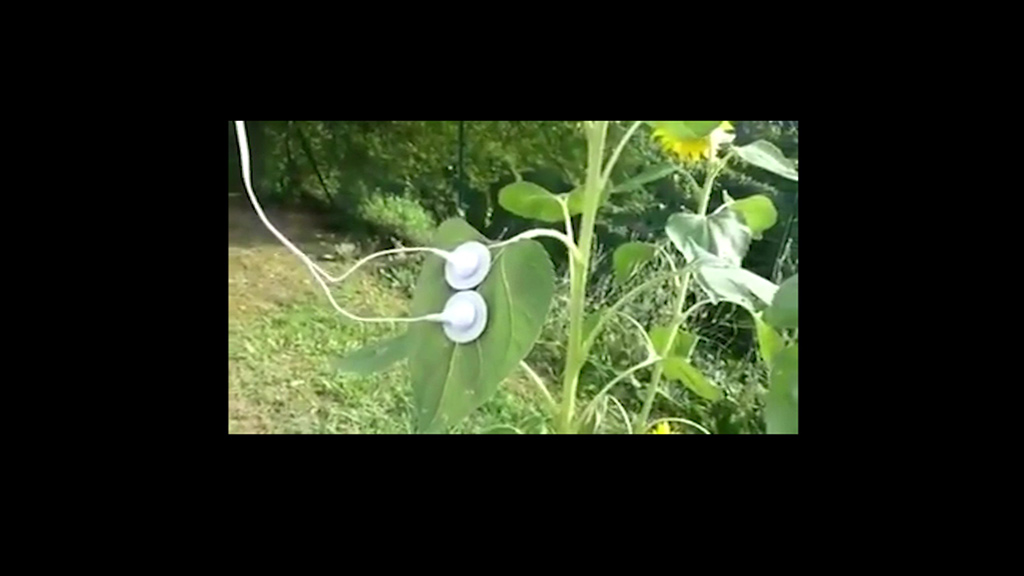
People share images and sounds on social media that they claim to be the hum of the Earth. These images and sounds are considered to be “picturesque”, “creative” and “artistic” to them; so they are worth sharing with others. But the earth has other sounds that people generally don’t notice. Namely, the alarm signals which inform about the progressing process of environmental crises.
The Smell of Earth and Tree | Negar Yaghmaeian | Photo Series | 2020
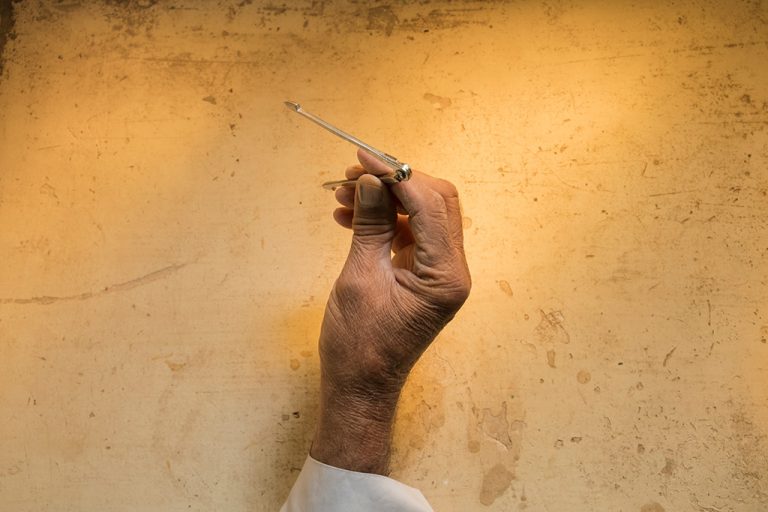
Maritime trade stretched across the Strait of Hormuz, which connects the Persian Gulf to the Arabian Sea. Trade was an economic activity and a complex web of cultural and social exchanges that strongly affected lifestyles in the region. The Smell of Earth and Tree is taken from the diary of an old sailor who recounts stories of his voyages. Like him, others remember their journeys from Iran to the West Indian Coast when tailwinds drove their shows and stars guided them.
While sailors talk openly about these often-perilous expeditions, fellow travelers, and free ports and bazaars, they do not talk much about their private lives and family histories. In this case, the travels and long layovers in harbors led to marriages between diverse nationalities, between Indians and Iranian looking to establish homes. However, with maritime trade fading away, many families were broken or separated.
To keep these experiences alive, Negar Yaghmaian explores small towns in the Persian Gulf, seeking to maintain a connection with the past. She gathers photographs, maps, and other treasured possessions to reimagine these stories, many of which remain untold. Through the meditative practice of listening, the artist picks pieces of the sailor’s recollections and carves out contemporary renditions of their familial, cherished truths.
Too Far, Too Close | Sarah Abbasnejad | Ongoing Photo Series | 2019

When I was ten years old, I watched The Little Mermaid, a beautiful, elegant woman who changes her whole life and persona for the other, forever. I was enchanted by the romantic images of the animation, and this is how I remember my first encounter with the world as a woman.
I spent my youth in romantic relationships where I had always been far from myself despite its free, independent, and equal appearance. Not only that, but I became close to my partner’s atmosphere, and it was a unilateral happening. I became far from my favorite cinema, music, and friends because of the fear of rejection by the other and for being loved by him. My progress was suspended, and I was joining in my partner’s growth to be a more appropriate companion. My goal was marriage and taking part in a life which was to be made by my partner and my support. Being lonely seemed disappointing.
Now, when I look back at my romantic experiences, I can see that they look like the animation of my childhood, which formed the hidden parts of my life. It is not a unique experience and can be easily traced to women’s society. It is where the vague teachings of independence and equality, along with dominant patterns of patriarchal and religion, have defined and redefined women’s life and their femininity. Eventually, women hide many parts of their lives, and emotions such as fear, guilt, and moral guilt which are so close to them.
In the present project, I have sought questions regarding femininity, distance, and denial of sexism in a society that may be called a semi-modern, semi-traditional and semi-religious one.
